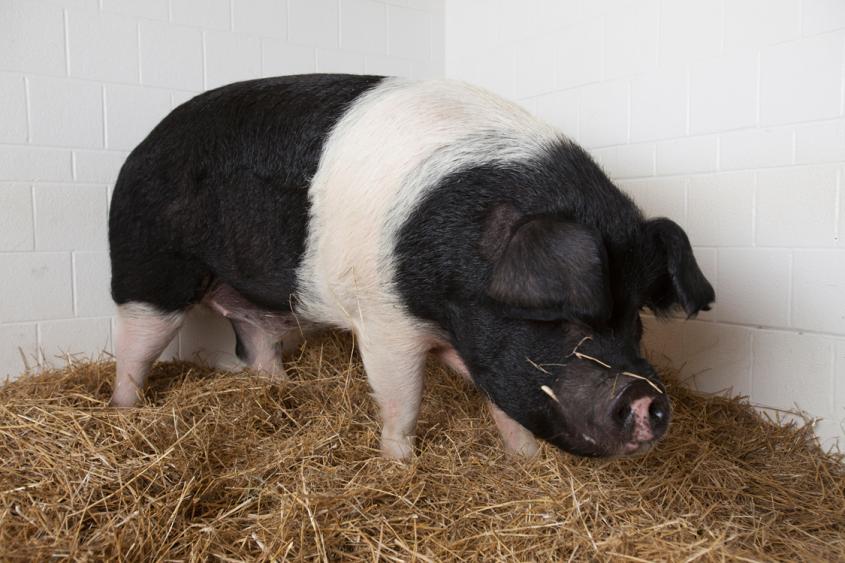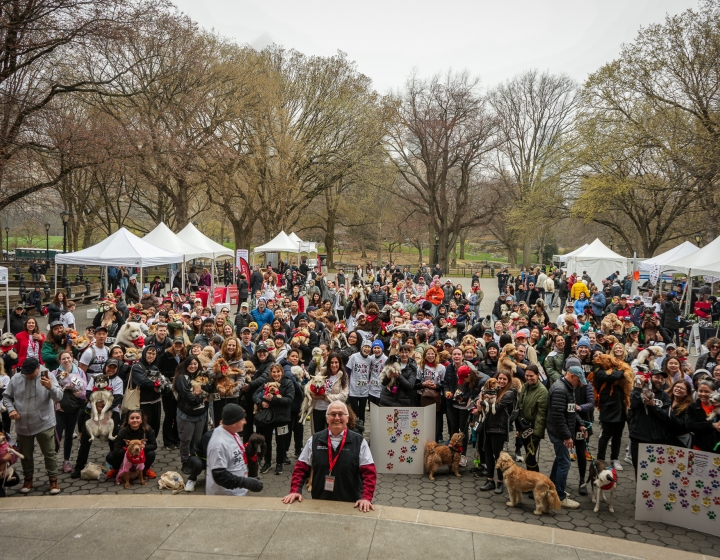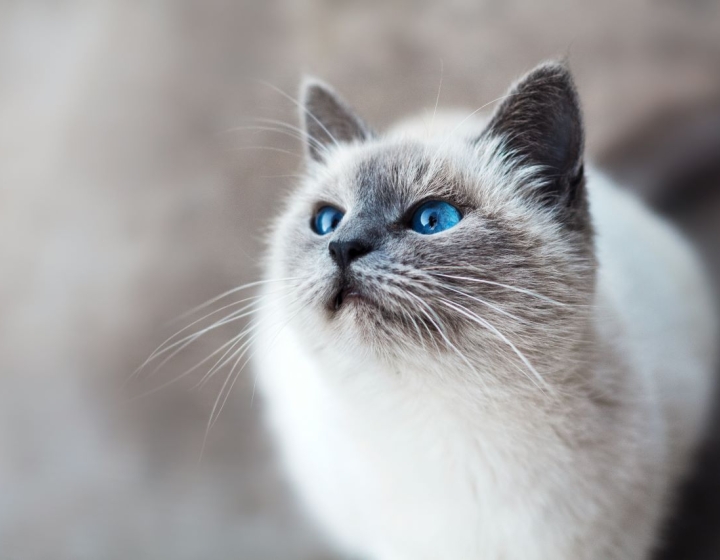Remembering Nemo: an exceptional case with exceptional teamwork
Nemo, a wonderfully, charismatic Hampshire pig came to Cornell as a patient in 2013. Former College Dean Dr. Michael Kotlikoff coordinated a team of veterinarians at the Cornell University Hospital for Animals (CUHA) that diagnosed Nemo with lymphoma and treated him with a CHOP chemotherapy protocol. While this approach is typically used for lymphoma in dogs, cats and humans, the clinical team successfully modified the delivery method for a 730-lb pig.
Coordinated Collaboration
Nemo received coordinated care from all members of the CUHA team:
- Animal Care Attendants:Dean Wolf and other members of the large animal care team worked diligently to ensure Nemo was comfortable during his hospital stay and calm during treatments.
- Licensed Veterinary Technicians: LVTS are the glue that keep the entire hospital team together. By working hand-in-hand with doctors while mentoring students, the LVTs worked diligently to keep Nemo medically and mentally healthy.
- Students: As a teaching hospital, students rotate through the many services in the Nemo Farm Animal Hospital. Several students helped with Nemo's treatments and participated in daily care, while learning crucial hands-on technical skills and oncology principles.
Service Synergy
Many CUHA services came together to provide Nemo the utmost level of care:
-
Internal Medicine: During Nemo's 14-month stay at the hospital, former resident Dr. Emily Barrell took charge of his chemotherapy and day-to-day care. "I learned a great deal about medicine and oncology and what it means to be a part of a collaborative team," she says.
-
Oncology: Before Nemo, no documented cases of pigs being treated for lymphoma existed. CUHA oncologist Dr. Cherly Balkman adapted a treatment plan based from dog, cat, and human lymphoma patients. Dr. Balkman says, This case has opened the door for other large animals to be treated for cancer."
-
Surgery: In and out-of-the-ordinary procedure, surgeons Dr. Susan Fubini and Dr. Jim Flanders implanted a vascular access port; running a catheter up a vein in Nemo's neck to a port behind his hear, they created an efficient, less invasive, drug delivery route.
-
Anesthesiology: Nemo often required anesthesia for his chemotherapy treatments, as well as pain management to ensure he was comfortable. Anesthesiologist Dr. Jordyn Boesch worked extensively with Nemo during his stay, and said "It was always a bit of an all-hands-on-deck situation for his procedures."
-
Imaging: Veterinary hospitals must use imaging equipment from the human medical market, which posed a challenge with Nemo, a 730-lb pig. Multiple members of the Imaging service, led by Dr. Meg Thompson, utilized ultrasound and radiograph to assess Nemo's health and response to treatments throughout the course of his disease.
Sadly, Nemo lost his battle with cancer, but his name and memory continue in part at the Nemo Farm Animal Hospital, which, thanks to Nemo's loving owners, continues to study and treat diseases of farm animals, and paves the way forward for future large animals to combat cancer.





